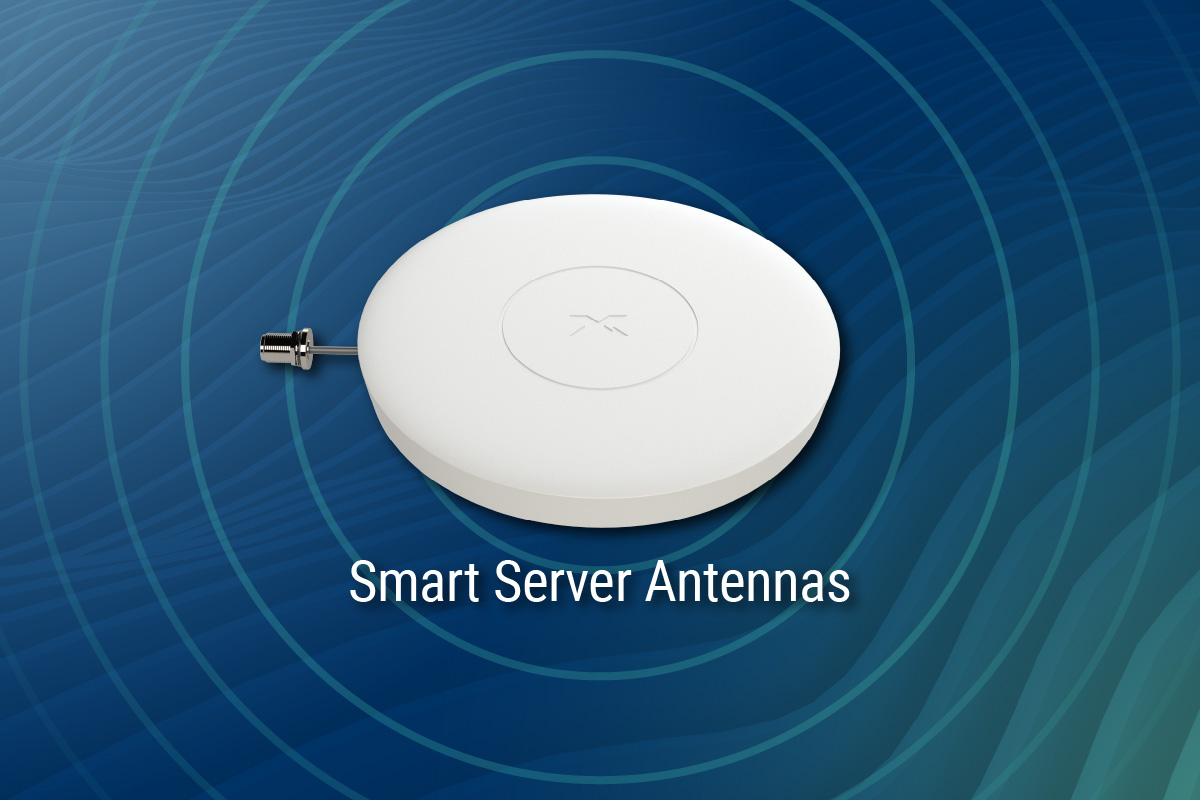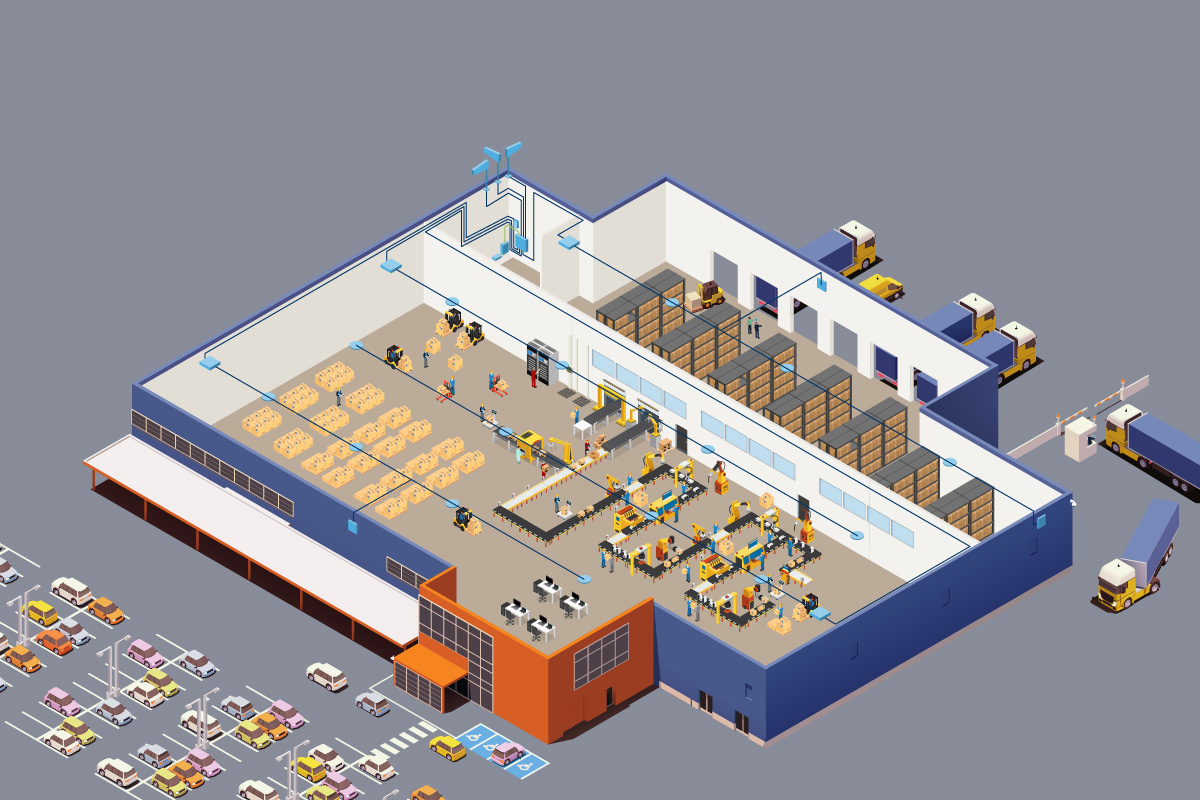Poor cellular reception inside grocery stores is a deal breaker
According to the Grocery Store Real Estate Market & Trends (2021) report published in July by First National Reality Partners, a private equity commercial real estate investment firm, “…the enduring demand of grocery items and the recent sales surges, the financial condition of the grocery industry as a whole makes grocery store retailers a safe credit bet for landlords.” The report also points out several other factors that make grocery retailers desirable tenants, including the long-term leases they prefer and the positive impact they have as an anchor store in generating more traffic for other retailers in a shopping center.
There are many ways to make a property more desirable for a grocery tenant. But perhaps one of the most important considerations is good cellular service, which is now a necessary utility for any grocery store, whether for customer satisfaction and sales or for operations. Regardless of the deal brokered by a commercial real estate company, if a prospective tenant is inspecting the space and can’t receive or make a call on their cell phone or access the data needed on a tablet, the deal could be at risk unless the poor cellular reception on the premises is fixed. Today 89% of U.S. grocery shoppers are using a smartphone to view grocery circulars, access loyalty awards, and use contactless payments while shopping, according to a research report from Acosta.
In the Southeast, a grocery chain with 1,800 outlets had been receiving complaints from employees and customers about the poor cellular reception inside its stores. The stores were all built to be hurricane rated, which meant construction used heavier duty materials so they can be storm shelters, but the cinder block walls and metal roofs obstruct cellular signals from penetrating into the stores. Cellular signal was not only needed for the satisfaction and safety of employees and staff, but also for backup in case of failure for checkout devices that enable customers to pay.
The grocery chain hired Emegc, a Tampa based telecommunications general and electric contractor and provider of wireless in-building and tower services. Emegc chose to deploy CEL-FI QUATRA hybrid active Distributed Antenna System (DAS) due to the cost-effectiveness and simplicity of the install. So far, the solution has been deployed at 180 new and existing stores, with each ranging in size from 40,000 to 50,000 square feet.
The installations were done overnight when the stores were closed to customers, using two to three technicians. The CEL-FI WAVE app made it easy to position the antennas. According to the project manager, “I don’t think they’d be able to do the job so rapidly without it. It can take a lot of time and headaches to move the antenna around to find the tower. CEL-FI WAVE streamlines the process.”
All the stores where CEL-FI QUATRA was installed now have the cellular coverage needed for customers and employees, and the active DAS hybrid is scheduled to roll out to 300 stores by the end of this year.
While grocery customers want cellular coverage while shopping, the warehouses that store and distribute tgroceries have also expanded the use of cellular networks for greater operational efficiency.
In the Southwest, a regional grocery store chain specializing in Latin American cuisine was experiencing connectivity problems that interfered with operations in its 353,000 square foot building where its primary distribution center and headquarters offices are housed.
The chain needed a solution to replace Wi-Fi calling, as the coverage was spotty and of a poor quality with too much latency. The company’s main concern was employee safety. The warehouse runs 24/7 and has 40 bays for trucks. At any given time, there are two dozen forklifts and the same number of power jacks whipping around the warehouse at high speed. The company was concerned that they could not depend on Wi-Fi calling if a safety issue occurred and an employee somewhere in the facility had to call 911. Handheld inventory devices were also being used to track inventory in real time when loaded on pallets and then into the trucks, all done wirelessly. These devices experienced problems due to the poor Wi-Fi connection, so the chain wanted to transition the handheld devices over to LTE for better reliability.
A carrier recommended improving cellular coverage in the distribution center so that the chain could move off Wi-Fi calling. Picocells were initially suggested, but too many units were required making that solution too expensive. There were also interoperability challenges for handoffs between the picocells when they were placed inside the facilities. The carrier contacted Nextivity for a solution and CEL-FI QUATRA was installed by RSRF, a reseller and engineering firm specializing in enterprise cellular DAS solutions based in Irvine, California.
Not only was the grocery chain extremely satisfied with the results, but the carrier was also able to arrange for the sale of an additional 100 cellular-enabled M2M devices to the chain. These M2M devices track lift equipment utilization so the company can better manage their resources through insights into usage trends and driver behavior. This sale increased the number of subscribed devices for the carrier.
For more information on how CEL-FI QUATRA can be used to rapidly and cost-effectively provide improved in-building cellular coverage for the grocery chain segment, watch the pre-recorded webinar “CEL-FI Products delivery 3G, 4G and 5G Coverage to Grocery Stores & Retail Spaces.”
A version of this article was originally published by Connected Real Estate Magazine.




